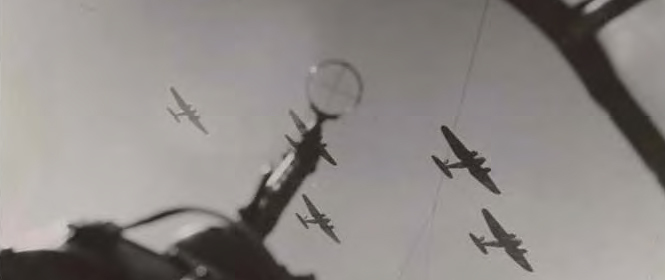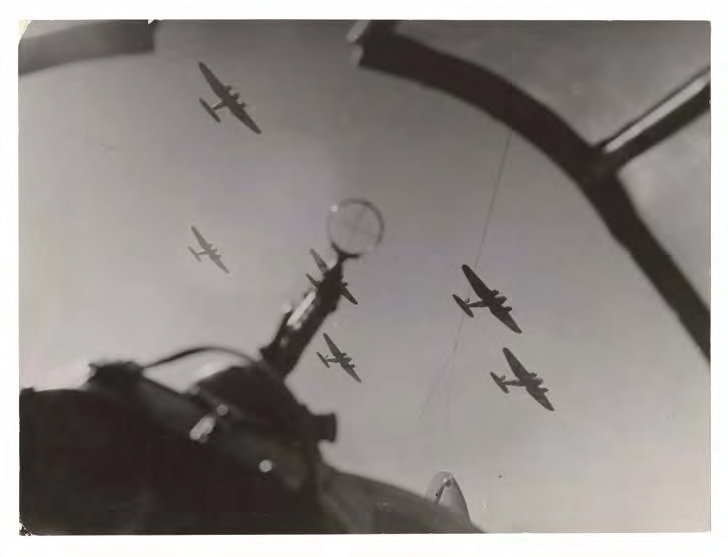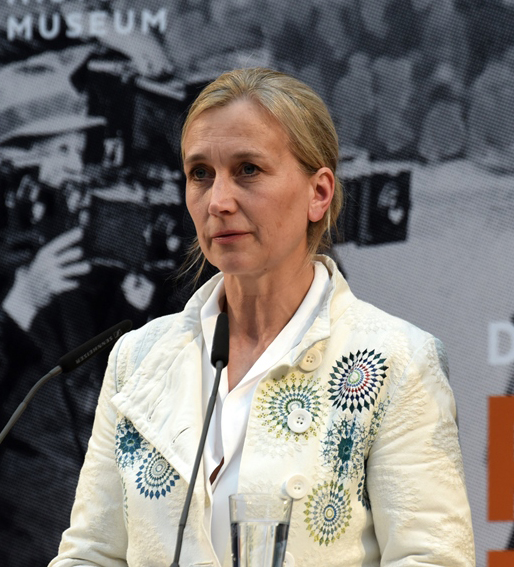
Willi Ruge: Photos for a New Era
Faster, more spectacular, and (most importantly) with the photographer in the midst of the action – Willi Ruge’s photographs seem like the immediate forerunners of today’s Instagram pictures. In his singular images often shot from unconventional angles, he not only conveyed the sensations of certain events, but also participated in them – be it a parachute jump or motor race – and so became part of the picture. Ruge’s approach proved influential on the visual language of his day. His spectacular picture of the German bomber squadron’s approach on Paris in 1940 is displayed in our exhibition. Dr. Katrin Bomhoff, curator of the “Invention of Press Photography” exhibition and an employee at ullstein bild, invites visitors to learn more about a photographer who actively sought out new personal experiences to get closer to the themes chosen by his commissioning editors, forging in the process a new style of press photography.
When the photographic “Ullstein Collection” in Berlin was first established, ullstein bild carried out an inventory. Under the heading “Willi Ruge” (1892–1961), the inventory lists a series of impeccably handwritten documents from the first half of the 20th century. These were in fact notes relating to a range of photographic subjects and series, which read like titles from a travelogue written with the express aim of eliciting readers’ interest with an array of exciting themes:
• My most dangerous photograph! Taking snaps of one’s own parachute jump
• Motor racing with Caracciola on the AVUS racetrack
• Photographs from Pernambuco
• The battle of the Gran Maco
• Gauchos taming wild horses on the Argentine Pampa
• Are you a detective?
• From the Cape to Cairo, like never before!
• 24 hours on full throttle – and the family helps out
• Diver – captured in mid-air
• Courage – frequently put to the test
The notes not only reflect the broad range of illustrated reports, but also the manner in which the editorial staff elaborated on the various themes. This in turn attests to the interaction of several forces beneath the shared roof of Ullstein in Berlin, Germany’s leading newspaper and magazine publisher in this period. Thus we observe the interplay between Willi Ruge’s photographic work, the editorial staff’s editorial choices – made with a view to appealing to a mass readership of major news publications such as the “Berliner Illustrirte Zeitung” (headed between 1905 and 1933 by its chief editor, Kurt Korff) – and finally the commission itself and the motivations behind it. The notes convey the array of themes that Willi Ruge used both to achieve fame and create a media sensation.
The Fall of the Icarus
Ruge was described during this period at Ullstein as an ‘airman and photographer’, and this was no mere journalistic embellishment. The pictures he took during his parachute jump over Staaken (near Berlin) are tribute the spirit of daring-do that characterized the photographer’s first-hand experiments. The pictures call to mind artistic representations of the earthward fall of mythological characters who seek to gain mastery of the skies, expressed here in a novel and modern manner: the consequences of Icarus’ flight are lent visual form by virtue of a photographic experiment. It is hardly surprising that a photo series depicting idiosyncratic flight attempts was presented in a 1934 issue of the “Berliner Illustrirte Zeitung” with captions reading: “The dream of Icarus with very latest technology”, and: “Myth Made Reality: The first person to achieve flight using the power of his own body”.
Other projects undertaken by Ruge also drew upon the photographer’s progressive and artistic working style: the series of pictures taken in 1931 from Rudolf Caracciola’s speeding racing car demonstrates the rapid perception and the photomechanical reproduction of the phenomenon of speed, resulting in distortions, blurs and a loss of clear perspective. The subject of the picture becomes more than just the motor race itself but also the car’s immediate environment.
Sporting Achievements in All Fields
The Ullstein inventory used keywords, or tags, that reflect the “danger zones” that the photographer was able to work in. These keywords were chosen with certain factors in mind that have lost none of their currency for press outlets today: topicality, newsworthiness, attraction – and (of course) sensationalism. Commissioned by his employers at Ullstein, Willi Ruge embarked on a journey to Argentina, created an aerial photo travelogue of a flight over Africa, and set about capturing the pinnacle of sporting achievements at the Winter Olympics. In turn, the newspaper publications set aside large-format and generously portioned pages for the topics explored in his picture cycles. This was particularly true of the “Berliner Illustrirte Zeitung”, a publication that encompassed a broad thematic spectrum: space was devoted to major sporting achievements from a variety of categories and environments, while also offering readers glimpses of scenes from everyday life and the latest political developments. To achieve this thematic diversity, the editorial process relied on a tried and tested medium: the picture montage. New sporting records were depicted in comparative contexts: speed skaters competed against racing cyclists, while even four-man bobsleighs and locomotives – man and machine – were pitted against one another.

German bomber squadron approaching Paris, Willi Ruge 1940 © ullstein bild
The publication of the photographs immediately becomes much more fraught with meaning when the images depict events in Nazi Germany that promoted the militarism of the regime – militarism that led ultimately to a catastrophic war. Willi Ruge was commissioned with providing coverage of the Luftwaffe. To look at these pictures now is to see the world through the viewfinder and hair-cross of the machine gun, to learn at first hand about the Wehrmacht’s military operations, or to be confronted directly with the heroization of Germany’s anti-aircraft guns. The photographer’s experiments with flight here give way to martial aggression, while his evocative visual motifs mutate into propaganda – war is now the order of the day.
Visitors can see “The Invention of Press Photography From the Ullstein Collection 1894–1945” until 1 January 2018.
 |
Dr. Katrin BomhoffDr. Katrin Bomhoff is an art historian/curator and heads the ‘Asset & Exhibition’ division at ullstein bild, Axel Springer Syndication GmbH in Berlin. |